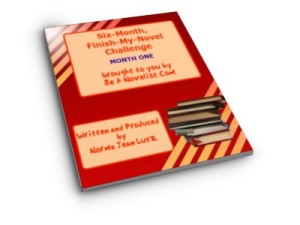 Two Parts
Two Parts
Fiction is made up of two parts – dialogue and narrative. The pace, tone, and flow of the plot line all comes about due to which is used when and where. For the beginning novelist this can be a frustrating dilemma. Fledgling authors are unsure as to how to decide when to use dialogue and when to use narrative. Here are a few guidelines that may help.
The decision will depend on what is unfolding at that point in the novel. Is this an action scene? It is a bridge (transition) section between two strong action scenes? Is there pertinent information that must be revealed to the reader at this point?
Immediacy
Dialogue has a sense of immediacy to it. What is being said between characters happens in the now. Dialogue’s tone can work to heighten tension, develop character personality, move the plot forward, and create a mood. Dialogue will also break up long passages of narrative.
If you want to step up the pace, use dialogue. A few lines of well-written dialogue can accomplish what it might take several paragraphs of narrative to do.
- Do you want to reveal your character’s reaction to a specific incident?
- Do you want to change the pace of the plot?
- Do you want to intensity characterization?
- Do you want to add a spark of life to the scene?
The answer to each question is – use dialogue!
What’s Happening?
Narrative sections in your novel come about to let your reader know what is happening. It’s the information of the cause and effect of certain events. It’s the description of place and people. Poorly written narrative passages make the reader want to skip over them to get to the good parts.
Choose narrative when you want to pace to slow some, because unlike dialogue, it lacks that strong sense of immediacy. Narrative works to build suspense and probably works better even than dialogue. Because it takes longer for narrative to build up a head of steam, it can be used to pace at exactly the rate you need for the tone of your particular story – fast or slow.
Getting a grasp on what information (and how much) must be woven in to make the story work is definitely a learned art. It usually doesn’t happen in a day. (Or a month – or a year.) Writing effective narrative comes with a great amount of practice.
The Third Choice
 While I mentioned at the outset that there are but two parts of a novel, dialogue and narrative, there is a third – but it is actually a type of dialogue. I’m talking about interior monologue or stream of consciousness.
While I mentioned at the outset that there are but two parts of a novel, dialogue and narrative, there is a third – but it is actually a type of dialogue. I’m talking about interior monologue or stream of consciousness.
The reader, essentially, is hearing the character talk to self. Something we all do on a regular basis. This type of inner dialogue works well to reveal the inmost heart and mind of the character and, like dialogue, will break up passages of narrative.
Tricky Narrative
Notice that I mention breaking up narrative but do not mention breaking up dialogue. That should speak volumes. It’s the narrative that can be the trickier of the two. Personally I enjoy tightly weaving the two together as much as possible.
Word Weaving
I find that I often resort to using the word weaving when talking about novel writing. The craft of knowing what word to put where, what sentence to put where, when to use dialogue, when to use narrative, when to speed up, when to slow down – it has to do with artfully weaving each part together. Many times – more often than not – as you proceed to weave your masterpiece, you will be pulling threads out and starting all over. But that’s okay. In fact, it’s crucial. It’s all a part of learning the craft to be a novelist.
~*~*~*~*~*~*~*~*~*~*~*~
Are you one of those budding novelists who makes a great start but you can’t seem to finish? Then this is for you! Be A Novelist, Six-Month, Finish-My-Novel Challenge! Six full months of guidance and instruction. Guaranteed to light a fire under your novel-writing attempts and to launch you into a pattern of consistent writing! Check it out here!

Photo: © Mariia Gerasimenko | Dreamstime.com

Thanks again Norma Jean, for your words of wisdom.
You’re so very welcome Liz. It feeds my “teacher itch.” :^) My double-passion — love of novel-writing, love of teaching — are activated together. Such fun!